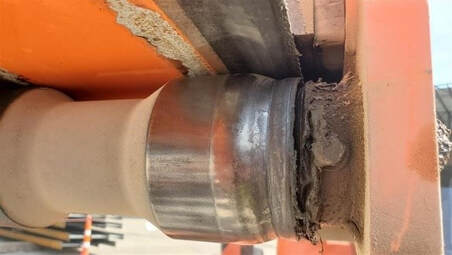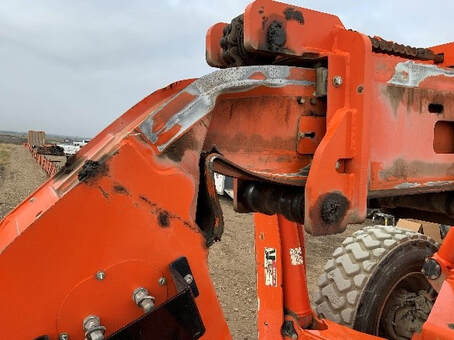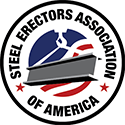|
Forklifts (telehandlers or industrial trucks) are vital workhorses in the construction industry. Routine inspections and maintenance are required to ensure that forklifts are reliable and safe to operate. In the steel erection industry, forklifts are constantly moving heavy loads, which leads to wear and tear. It’s important that operators not become complacent when conducting routine inspections, which can lead to discovery of critical warning signs. Completing regular maintenance and correcting damage or deficiencies is essential to safety and prevention of operational hazards. According to ANSI B56.1-2009 5.5.1, if the forklift is found to be in need of repair, is unsafe in any way, or contributes to an unsafe working condition, it needs to be reported and the forklift should not be operated until it has been restored to safe operating condition. Here’s an example of a forklift boom failure that may have been prevented with thorough inspection and prompt maintenance. The 2019 model, rated for 10,000 lbs., had 2,122 hours of operation on it. One roller at the boom extension experienced uneven wear, which transferred the load weight away from the vertical sides of the boom onto the horizontal aspect of the boom. (See image 1). The boom is designed as a structure, and when it starts to deform it loses its shear strength and creates a weak point that causes it to buckle. That’s exactly what happened here. The deficiency caused the boom section to to crack along the lower corner causing it to buckle and fail completely. (See image 2) The issue was determined to be a design flaw which created uneven wear on the roller. The manufacturer replaced the boom and repaired the forklift.
This issue came as a surprise to the contractor, as no one had experienced it before, but it shouldn’t have been. With careful pre-use inspections and scheduled maintenance inspections, this could have been caught sooner. In this instance, the operation and safety manual for this specific forklift required a regular inspection at 250 hours, or after 3 months of use. The manual specifically states to inspect the boom rollers and slide blocks for condition and tightness. The take aways from this incident emphasizes the importance of thoroughly performing regular inspections and maintenance. A failure like this could have resulted in an injury or death. Don’t become complacent when performing routine inspections, do it right every time to ensure your safety and the safety of those around you. Best Practices:
Resources OSHA Standard §1926.602 Material handling equipment. ANSI B56.1-2009 5.5 Operator Care of Truck Sample Generic Checklist for Powered Industrial Trucks OSHA QuickCard – Safe Forklift Operation This Safety Flash was contributed by David Darger, CSO, CHST, of BZI-Steel., in cooperation with SEAA’s Safety Committee. It is designed to keep members informed about ongoing safety issues and to provide suggestions for reducing risk. Best practices are gathered from a variety of sources. They may be more or less stringent than individual corporate policies and are not intended to be an official recommendation from SEAA. Always get approval and direction from your company officers on any new practice or procedure as these best practices may not work for all situations. Everyone benefits when a worker avoids injury. Submit your ideas for Safety Flash to [email protected] Comments are closed.
|




 RSS Feed
RSS Feed
